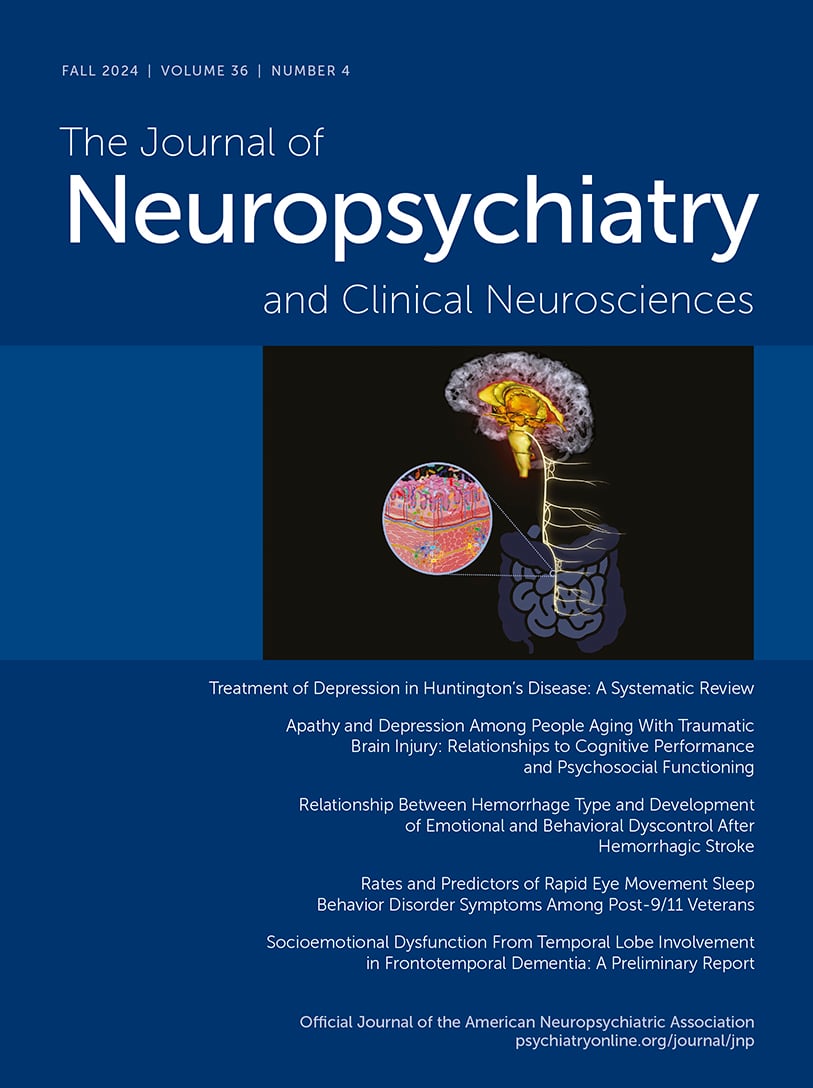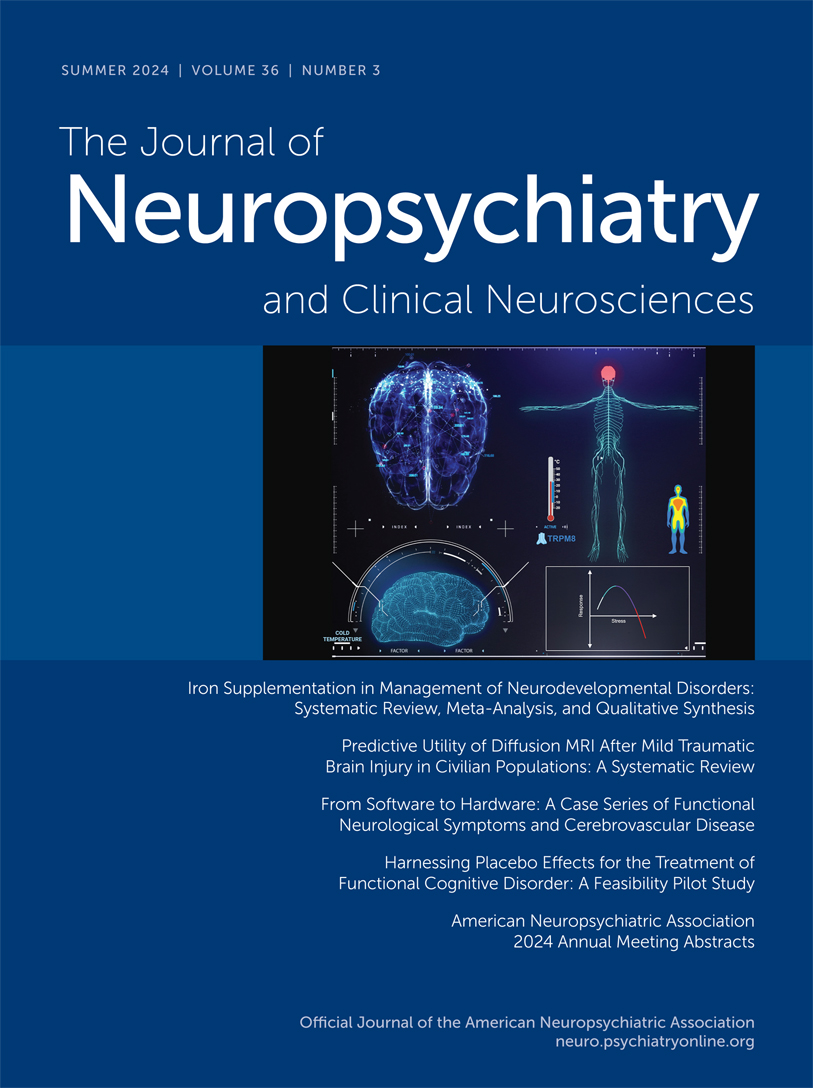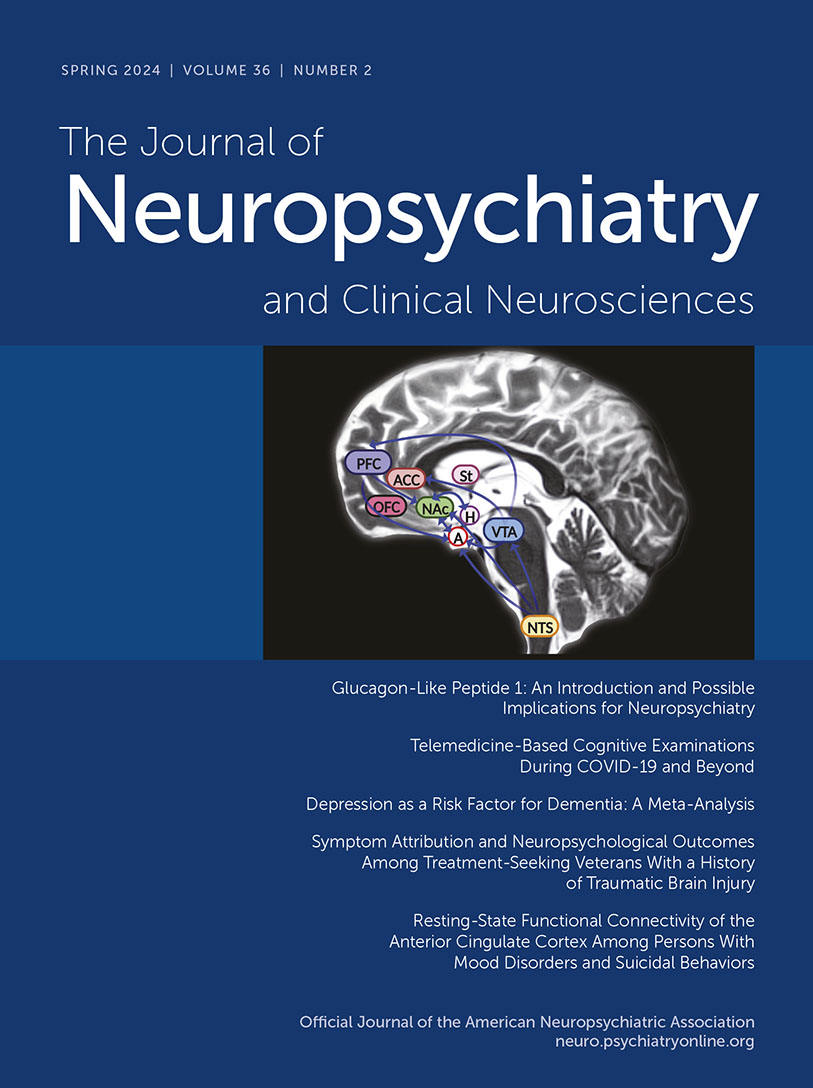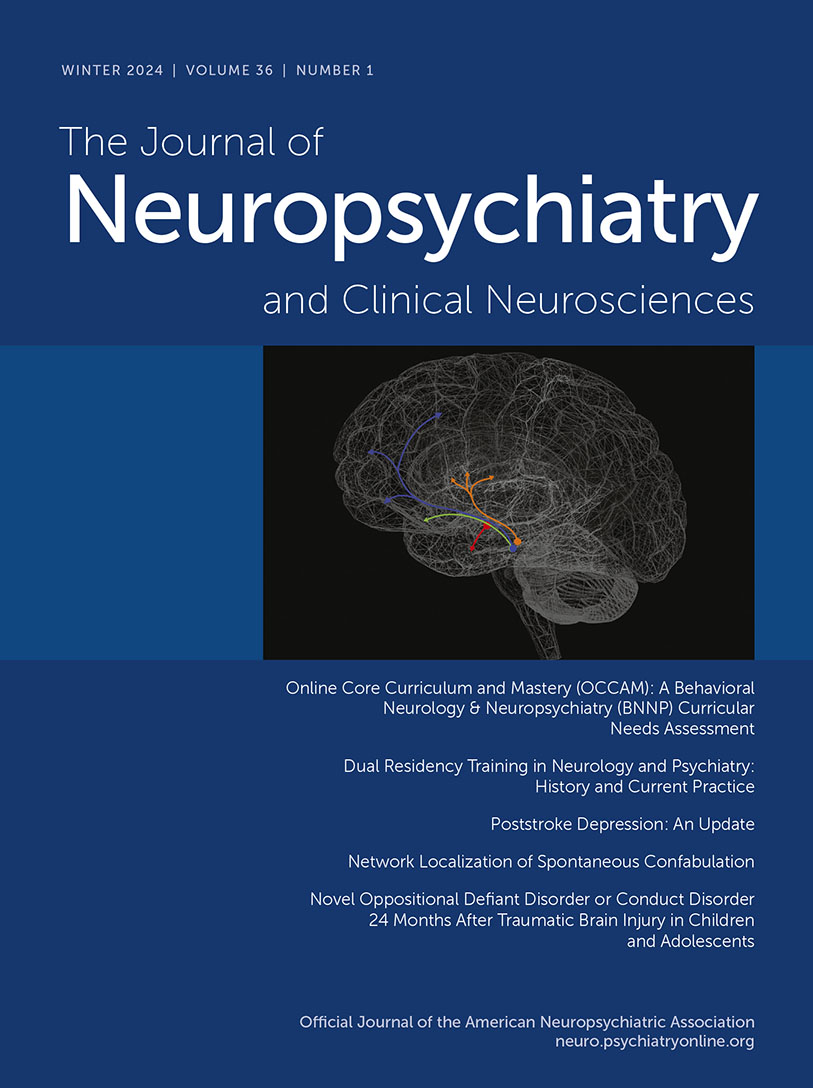The Journal of Neuropsychiatry and Clinical Neurosciences
- Volume 25
- Number 4
- October 2013
Letters
Windows to the Brain
Publication date: 01 October 2013
Pagesvi–254Recent evidence delineating some of the neurobiological changes that occur as a result of inducing a placebo or nocebo response serve as a strong reminder that these effects are also an active part of medical treatment.
https://doi.org/10.1176/appi.neuropsych.13090207Special Articles
Publication date: 01 October 2013
Pages255–263In the acute phase of ischemic stroke, increased IL26 plays a key role in the onset of depressive disorders, apathy/amotivation, somatic symptoms of depression, and neurological/functional symptoms, resulting in higher disability and poor outcome of ...
https://doi.org/10.1176/appi.neuropsych.12120399Publication date: 01 October 2013
Pages264–271This systematic literature review found that the most significant improvements were reported by patients presenting with affective symptoms and consistent neuroradiological changes. In these patients, improved clinical outcomes correlated with the largest ...
https://doi.org/10.1176/appi.neuropsych.13020022Regular Articles
Publication date: 01 October 2013
Pages272–282Short-term psychiatric morbidity associated with mild traumatic brain injury in children occurs more commonly than previously reported and is related to both pre-injury social factors and concurrent neurocognitive functioning.
https://doi.org/10.1176/appi.neuropsych.12040078Publication date: 01 October 2013
Pages283–291Apathy is common after stroke and becomes more prevalent with time, especially in those who show evidence of cognitive and functional decline.
https://doi.org/10.1176/appi.neuropsych.12040080Hippocampal Volume Reduction Correlates With Apathy in Traumatic Brain Injury, But Not Schizophrenia
Publication date: 01 October 2013
Pages292–301Imaging findings revealed specific areas of volume reduction in TBI survivors and areas of cortical thinning among patients with deficit syndrome schizophrenia. The severity of apathy symptoms was similar across patient groups; however, severity of apathy ...
https://doi.org/10.1176/appi.neuropsych.12040093Publication date: 01 October 2013
Pages302–307Increased apathy is associated with greater amyloid burden but not regional hypometabolism in mild cognitive impairment.
https://doi.org/10.1176/appi.neuropsych.12060156Publication date: 01 October 2013
Pages308–318Sexual dysfunction rates were higher for major depressive disorder than for atypical depression. Depression affected sexual function domains differently: orgasm was most impaired, whereas sexual desire was preserved. More severe depression resulted in ...
https://doi.org/10.1176/appi.neuropsych.12010004Publication date: 01 October 2013
Pages319–326The authors examined associations of various sleep-disturbance symptoms with health-related quality of life (HRQOL) in 153 adults with Parkinson’s disease (PD). PD patients reported more snoring, sleep inadequacy, daytime somnolence, and sleep-maintenance ...
https://doi.org/10.1176/appi.neuropsych.12070175Clinical And Research Reports
Publication date: 01 October 2013
Pages327–334Acute and transient psychotic disorders (ATPD) are different from schizophrenia; however, very little research has been done on this disorder in low-income countries, where the incidence is as high as 10 times the incidence in the more developed ...
https://doi.org/10.1176/appi.neuropsych.12120397Publication date: 01 October 2013
Pages335–338Pathological diagnosis remains the gold standard for the diagnosis of sporadic Creutzfeldt-Jakob disease (sCJD), but being able to differentiate between CJD and non-prion diseases clinically is important because many of the non-prion, rapidly progressive ...
https://doi.org/10.1176/appi.neuropsych.13020025Clinical and Research Reports
Publication date: 01 October 2013
Pages339–342Disulfiram is an alcohol-deterring agent with few rare serious adverse effects, usually dose-related, reversible, and more frequent with comorbid alcohol and nicotine dependence. We report a prospective follow-up of such a case with reversible peripheral ...
https://doi.org/10.1176/appi.neuropsych.12120410Publication date: 01 October 2013
Pages343–345Major Depressive Disorder (MDD) is among the most frequent comorbidities occurring in the course of Parkinson’s disease (PD), and therefore, most PD patients receive antidepressant drugs. Agomelatine is a recently introduced antidepressant drug acting as ...
https://doi.org/10.1176/appi.neuropsych.12110286Appreciation to Reviewers
Publication date: 01 October 2013
Pages346–347https://doi.org/10.1176/appi.neuropsych.254appreciationPast Issues
View Issues Archive
Vol. 36 | No. 4

Vol. 36 | No. 3

Vol. 36 | No. 2
